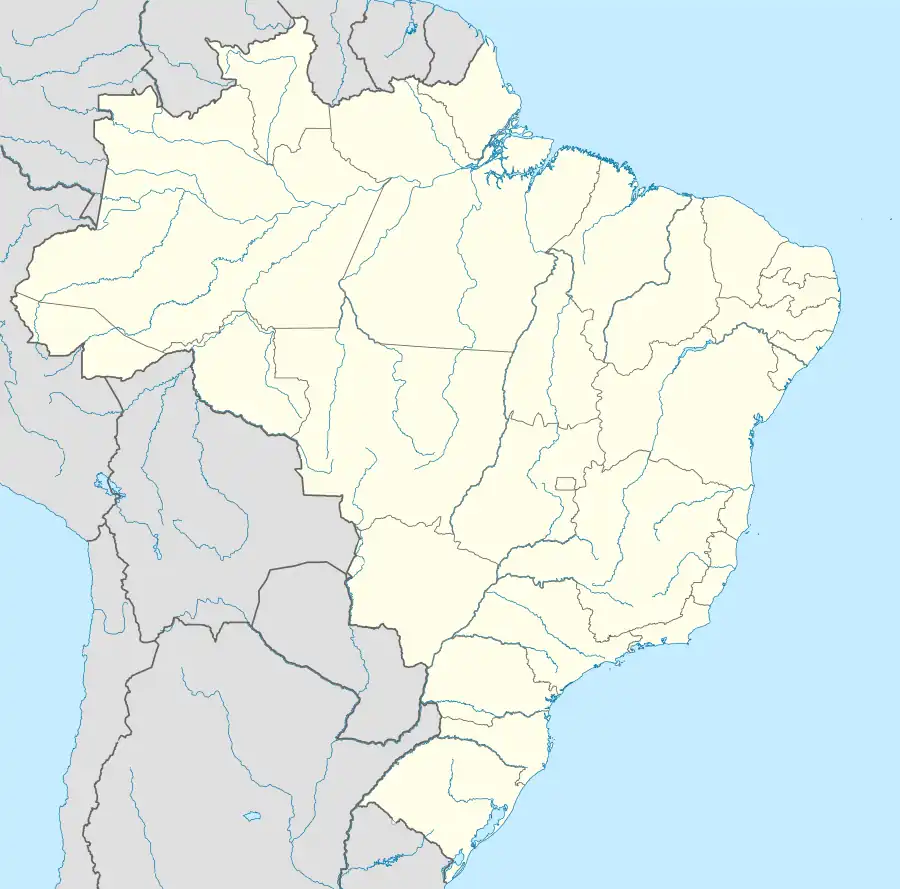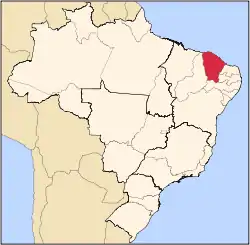Quixeramobim | |
|---|---|
 Coat of arms | |
 Location in Ceará state | |
 Quixeramobim Location in Brazil | |
| Coordinates: 5°12′S 39°17′W / 5.200°S 39.283°W | |
| Country | Brazil |
| Region | Northeast |
| State | Ceará |
| Population (2020[1]) | |
| • Total | 81,778 |
| Time zone | UTC−3 (BRT) |
Quixeramobim (formally Santo Antônio do Boqueirão de Quixeramobim; formerly Nova Vila do Campo Maior) is a municipality in central State of Ceará, northeastern Brazil. It has a population of about 81,778 (2020 est). The local biome is caatinga hiperxerófila.
Climate
Semi-arid tropical warm with rainfall concentrated from February to April. The average temperature is 26–28 °C and the average annual rainfall is 499 mm.[2]
The Paus Brancos district of the municipality was designated a priority area for conservation and sustainable use when the Caatinga Ecological Corridor was created in 2006.[3]
History
It was founded in the 17th century on lands adjacent to Rio Ibu (Quixeramobim) and became a municipality in 1755.
Economy
The primary economic occupations are farming and ranching.
Famous residents
- Iarley (born 1974), football player, World Champion at the 2006 FIFA Club World Cup
References
- ↑ IBGE 2020
- ↑ Wernstadt, Frederick L.; World Climatic Data; published 1972 by Climatic Data Press; p. 102.
- ↑ Mattos, Marluza (2006), Ministério cria Corredor Ecológico da Caatinga (in Portuguese), Ministério do Meio Ambiente, retrieved 2016-11-01
